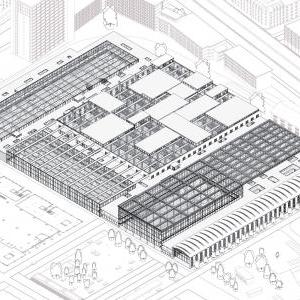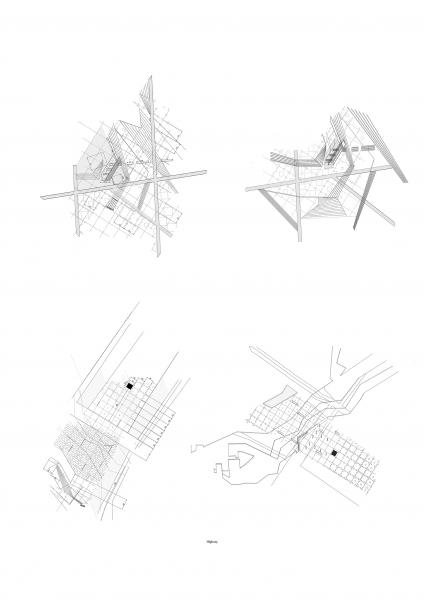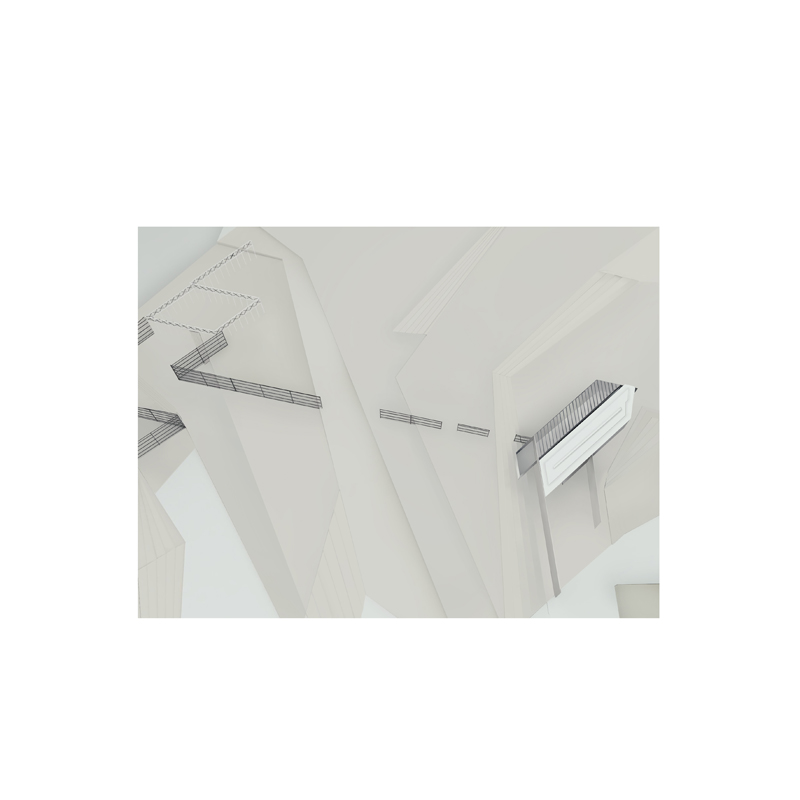Diploma 8’s recurrent agenda of the Corporate Domain has always served as a device to approach architecture as a function of the city. The unit attempts to participate in the greater discourse of architecture as a language and maintains that such a pursuit can, and perhaps should, most urgently be reified by the built form. Adopting architectural theses on the structures of typology, complexity and concepts of form, the unit integrated what it considers the dominant constituent of the contemporary city: the Corporate Domain. Whilst initial research focused on the development of postwar corporate precedents, student projects dealt mostly with speculative proposals that questioned and problematised the current condition of the city, and an unstable and evolving notion of ‘corporation’.
With a body of projects developed under the same agenda during the preceding two years, current students were in a position to both exercise the brief and critically redefine some of its inherent assumptions. Beyond the unit’s tendency of understanding the Corporate Domain as an element or protagonist of architecture and the city, current projects affirmed the value of assaying such architecture as a complex series of relationships that are products and components of larger processes. Though fundamentally inclusive of social and cultural relationships, the primary connection between student arguments and their projects was placed at the level of form. Projects sought to challenge the idea of architectural form only as a process, in favour of a notion of architecture as a practice aimed at a discourse. This year’s student projects offered a brief yet incisive argument for a more descriptive architectural enquiry.
Unit Master
Eugene Han
Visiting Jurors
Pier Vittorio Aureli
Andy Bow
Barbara-Ann Campbell-Lange
Javier Castañón
Ryan Dillon
Oliver Domeisen
Shin Egashira
Maria Fedorchenko
Francesca Hughes
Sam Jacoby
Tobias Klein
Marina Lathouri
John Palmesino
Theodore Spyropoulos
Carlos Villanueva Brandt
Thomas Weaver
Michael Weinstock
Andrew Yau
Alumni Contributors
Hussam Dakkak
Nora Nilsen
Beom Kwan Kim
Sakiko Watanabe
Gustav Düsing
Nathalie Matathias
How can a monument be made relevant when generating an urban memory void?
Cities are made out of presences and absences. Buenos Aires is shown as an interface between a traditional city and a modern city; one is generating space and the other is generating object. The site is a no place- an urban island which different urban typologies collapse onto it. The too much of public space has shifted the ratio of the monument on the site to a pathological one. Through proposing to extend MALBA, the museum of modern art of BA as a corporation to a main synthesis area in the city, the monument would be contextualized within the urban dynamic through the popular culture and art. The design strategy of constructive gridding system that would dissolve the monument into its own duplication and through its perceptual demolition it would revive itself. The cultural centre is fragmented on the site as pavilions which behave as a timeline to and from the monument. The different quality of spaces are unified by the directionality of the grid and by the ambiguities of inside and outside. architecture and landscape, object and space. Places of threshold are crucial as absence is as important as presence in order to make a connection. The move from object into space is critical in understanding the role of art and architecture in the cultural centre which I am proposing. I am trying to maximize the exhibition space and invite the urban space to leak in the cultural centre. This is done through dismissing the display wall of the traditional museum though using it- it would constantly adapt to different scale and geometry to whatever programmatically reason is needed. Each time there is an exaggeration of one structural element until it echoes and transforms into another space.
Concluding my project, the city skeleton should evolve in an even composition in order to allow for a single building to refer to the city as a whole. The site behaves a curated museum of its own archaeology, a place of activity and reflection of its own time.



































































